Last Updated on Fri-Mar-2024 by Robert Bogere
In today’s gig world, I suffer fierce competition to attract my target audience’s attention.
It’s no different to you reading this note or any other brand out there. May be I and you have issues with our brand consistency examples. Who knows?
I know competition is health, but how can you favorably compete with other players in the marketplace?
Among the few powerful factors that can determine my success or yours is brand consistency. I repeat its consistency and consistency.
Discover about how you can develop a strong brand culture.
A strong and consistent brand presence has the energy to resonate with its customers, create lasting connections, and result in brand loyalty.

When your brand maintains consistency, it becomes easily recognizable and memorable, standing out in a competitive marketplace. In this insightful piece, you’ll learn;
- What brand consistency is
- The importance of brand consistency
- And, how to build meaningful brand consistency.
According to a study by Marq formerly Lucidpress, consistent branding can increase revenue by up to 33%.
This shows brands maintaining their brand messaging and visual identity across their channels have a higher chance of attracting and retaining customers, leading to increased annual revenue.
What is brand consistency?
According to American Marketing Association, brand consistency is the practice of delivering messages and brand identity elements uniformly across all communication channels.
This develops a coherent and recognizable brand identity, making it easier for customers to connect with and remember the brand.
And then Forbes defined it;
As the ability of a company to project a uniform image of itself to the public.
That means wherever your customers see your brand, they see the same visual stuff, hear the same message, and experience the same emotions, reinforcing their perception of your brand.
How important is brand consistency
It helps build your trust and credibility
When your brand applies consistency, it breeds trust. When people encounter a brand that delivers a consistent experience from time to time, they automatically start to develop a sense of reliability and familiarity within.
That built trust is the cornerstone of building long-term relationships with such customers. Trustworthy brands gain a competitive edge as customers are more likely to select them over less consistent brands.
Again, trust earned from brand consistency can turn your customers into brand advocates or ambassadors who voluntarily promote your brand through word-of-mouth, referrals, and other sources.
Brand consistency is the glue that holds everything together for a brand. It’s what makes a brand instantly recognizable and memorable. Without consistency, a brand can become disjointed and confusing to consumers, leading to a loss of trust and loyalty.
Susan Gunelius, CEO of KeySplash Creative, a marketing communications agency
In a survey carried out by Forbes 71% of consumers stated that they were more likely to buy from a brand they trust.
Consistency is a key driver of trust, and brands that consistently deliver on their promises are more likely to build a loyal customer base.
Brand consistency builds trust and credibility, which are essential for brands to succeed in a competitive market. Trust is the foundation of customer loyalty, and consistency helps create predictability and reliability for customers.
Denise Lee Yohn, a brand leadership expert and author of “What Great Brands Do”
It helps brand differentiation in the marketplace
In such a competitive marketplace, differentiation is important for your brand’s survival. With brand consistency, your brand can carve out its own identity and stand out from its competitors.
The differentiation is not only visual, but also extends to the brand’s voice, personality, and positioning.
When you distinguish a brand at a glance and feel confident about its identity, you’re more likely to choose it over and over again.
In a study by Siegel+Gale, it was found that 64% of consumers build relationships with brands based on shared values.
Consistency in brand messaging and communication allows brands to differentiate themselves in the market by effectively communicating their unique value proposition.
It helps create emotional connections
Since humans are emotional, successful brands understand how to tap into customers’ emotions. Brand consistency in messaging and imagery allows your brand to convey its values, beliefs, and unique selling value level.
Emotional connections go beyond your product features, specifications, and pricing. They should form an integral part of a consumer’s decision-making process resulting in increased brand loyalty.
Brand consistency enables emotional connections with customers. When a brand delivers on its promises consistently, it creates a sense of security and familiarity, allowing customers to form deep emotional bonds with the brand.
Brian Sheehan, professor of advertising and author of “Loveworks,” remarks
It helps in adapting to changing consumer behavior
Brand consistency doesn’t mean rigidity as numerous brand managers think and do; instead; it allows strategic adaptability.
Since consumer preferences and behaviors change every day, your brand must stay relevant while keeping in mind its core identity and brand essence.
Whether you’re updating your brand logo or embracing emerging communication channels; consistency ensures your brand’s essence remains the same.
A consistent brand is a disciplined brand. Consistency ensures that a brand’s core values and promises are communicated effectively, aligning with customer expectations. It’s crucial to stay true to the brand’s essence and avoid dilution through inconsistency.
Laura Ries, branding consultant and co-author of “The 22 Immutable Laws of Branding
It helps increase your brand recognition
Recognition is vital for building a strong and meaningful brand. When a brand is consistent across numerous platforms, consumers can quickly spot and recall it amidst the vast daily sea of brands.
Consistency is essential for brand recognition. A consistent brand creates an expectation in the minds of customers about what to expect from the brand. If a brand constantly changes its messaging or visual identity, it becomes difficult for customers to form a clear and cohesive impression.
Marty Neumeier, author, and brand strategist
It helps play a role in digital media
In this digital era, where customers interact with brands through websites, social media platforms, and digital advertising. Brand consistency is more vital.
Consistency across all digital touchpoints improves user experience and strengthens brand recall and recognition irrespective of where your customers or prospects encounter your brand online.
In a world of infinite distractions, consistency helps cut through the noise. A consistent brand presence helps brands maintain top-of-mind awareness, making it easier for customers to recall the brand when making purchase decisions.
Andy Crestodina, co-founder and Chief Marketing Officer of Orbit Media Studios
Discover: How you can develop your brand essence
How to build your brand consistency?
1. Outline your brand identity
Think by outlining your brand’s purpose, vision, mission, values, personality, and unique selling value. Know what makes your brand unique from your competitors. This forms the actual foundation for your brand consistency efforts.
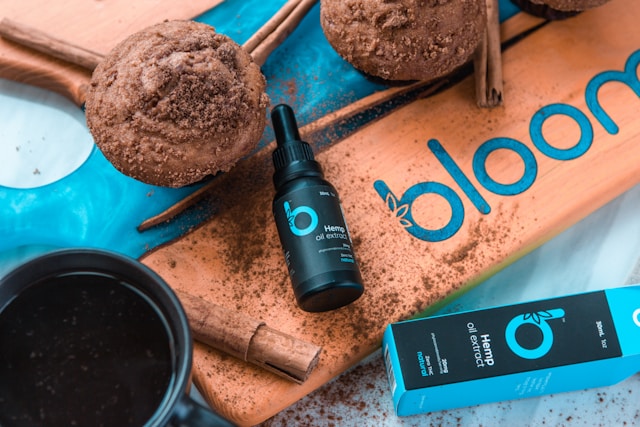
2. Develop your brand guidelines
Create a meaningful brand manual guideline that defines how your brand should be represented internally and externally. Such guidelines should cover all your brand identity elements – logo usage, color schemes, typography, imagery, tone of voice, messaging, and brand positioning.

Regularly review and update your brand guidelines as required and ensure they’re followed rigorously by your team.
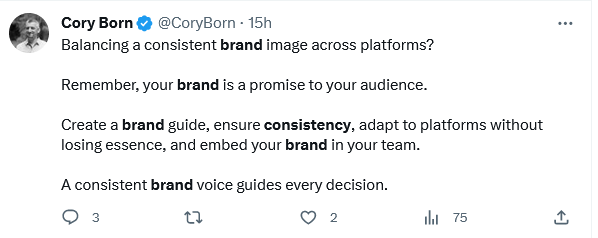
3. Maintain consistent visual identity
Make sure your brand’s visual elements are consistent across all your touch points – marketing asset materials, website, social media, and packaging.
Maintain your logo, color palette, and typography to create a cohesive and recognizable brand feel and look.
4. Maintain your online consistency
Your online presence should align with your brand guidelines and maintain a cohesive image. Focus on consistent branding across your website, social pages, and other marketing platforms.

5. Consistency in content marketing
Have a consistent approach to content creation and distribution. In your blog posts, videos, or social content. Maintaining a consistent style and message strengthens your brand identity.
6. Be authentic and adaptive
While brand consistency is important, it’s vital to remain authentic and adaptable to new market trends and customer preferences. You don’t need to be rigid in whatever you do.

7. Educate your employees
Train your team members about your brand guidelines, the importance of brand consistency, and how to implement it.
Everyone within your organization should be on the same page when it comes to your brand.
8. Monitor and control
Monitoring should be done regularly. Use relevant brand consistency analytics and metrics to measure and control the effectiveness of your brand efforts.
Read more about: How you can uniquely position your brand
Brand consistency examples
1. Coca-Cola
Coca-Cola is one of the most global iconic and recognizable brands. Its brand consistency has played an important role in its enduring success.
The brand has maintained a consistent red color palette, font, and iconic logo since its inception in 1886. With its long history, Coca-Cola has maintained delivering a consistent message of happiness, joy, and togetherness through its advertising and marketing campaigns.
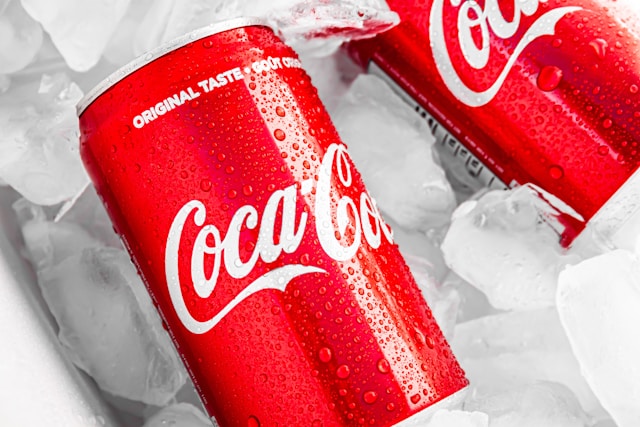
The “Share a Coke” campaign is an excellent example of Coca-Cola’s brand consistency in action. In this campaign, Coca-Cola replaced its logo with popular names and terms like “John,” “Peter,” and “Sophie” on its cans and bottles.
The campaign was highly successful, creating a personalized experience for consumers and encouraging them to share their Coca-Cola moments on social media.
The consistent use of the brand’s iconic visual elements and messaging has helped Coca-Cola maintain its position as one of the world’s most valuable and beloved brands, fostering strong consumer emotional connections.
2. Apple
Apple is renowned for its unwavering commitment to brand consistency across its products, marketing, and retail experiences.
From its sleek and minimalist product designs to its simple yet powerful advertising campaigns, Apple maintains a consistent and distinctive brand identity.
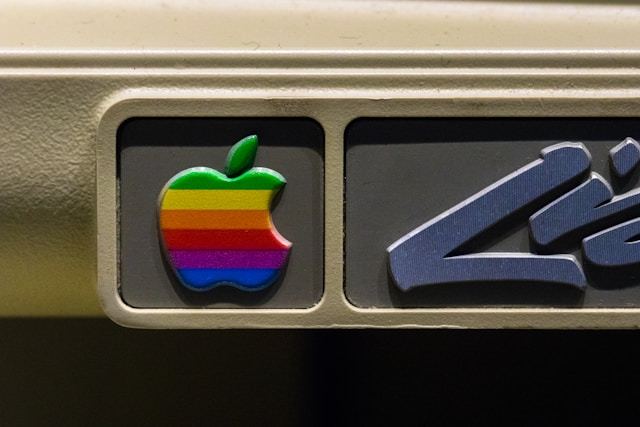
One notable example is Apple’s “Get a Mac” advertising campaign released in 2006, featuring actors Justin Long as “Mac” and John Hodgman as “PC.”
The campaign consistently portrayed Mac as cool, innovative, and user-friendly compared to PC’s more traditional and cumbersome image.
The campaign effectively conveyed Apple’s brand message of simplicity, creativity, and cutting-edge technology.
Apple’s brand consistency extends to its retail stores, where the same design principles are evident.
The minimalist and clean aesthetics, the use of white space, and the attention to detail all contribute to a seamless and consistent brand experience for customers.
The brand consistency employed by Apple has resulted in a fiercely loyal customer base and has solidified its position as one of the world’s most valuable and influential technology companies.
3. Nike
Nike, a world-leading sportswear brand, is known for its consistent and powerful branding. The “Just Do It” campaign is an example of Nike’s brand consistency.
Launched in 1988, this slogan has become synonymous with the brand’s spirit of determination, ambition, and athleticism.
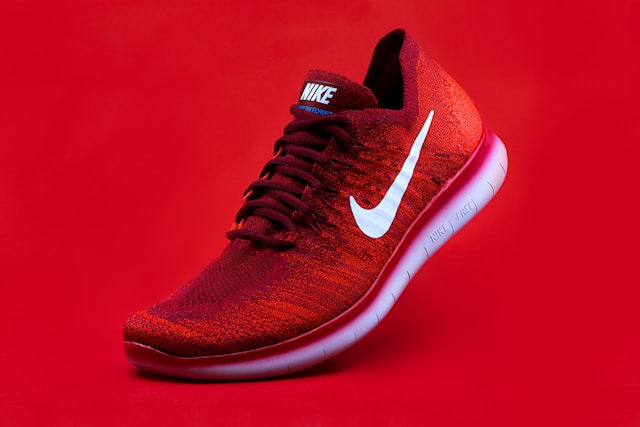
The campaign has been used consistently across various advertising channels and has featured numerous high-profile athletes, reinforcing Nike’s association with sports excellence.
Another aspect of Nike’s brand consistency lies in its visual identity. The iconic Swoosh logo, designed in 1971, remains largely unchanged to this day. It represents movement, speed, and victory, aligning perfectly with Nike’s core values.
Nike’s consistent brand messaging, combined with its focus on innovation and product quality, has enabled it to maintain its dominant position in the sports apparel industry and capture the hearts of athletes and consumers worldwide.
Discover: How can you develop your a brand unique proposition
Recap of maintaining brand consistency
By maintaining a consistent brand identity across products, marketing campaigns, and customer experiences, your brand can build a loyal customer base and achieve long-term success in its respective industry.
Brand consistency is not a mere design guideline; it is a strategic imperative for brands looking to make a lasting impact in their industry.
A strong and consistent brand presence provides a solid foundation for growth, differentiation, and long-term success in a competitive marketplace. With my help, you can ensure you’re presenting your consistent brand to your target audience.
If your brand is ready to stand different and attract meaningful customers in a way that supports your brand’s growth, Talk to me and we discuss how we can do this together to build you.




